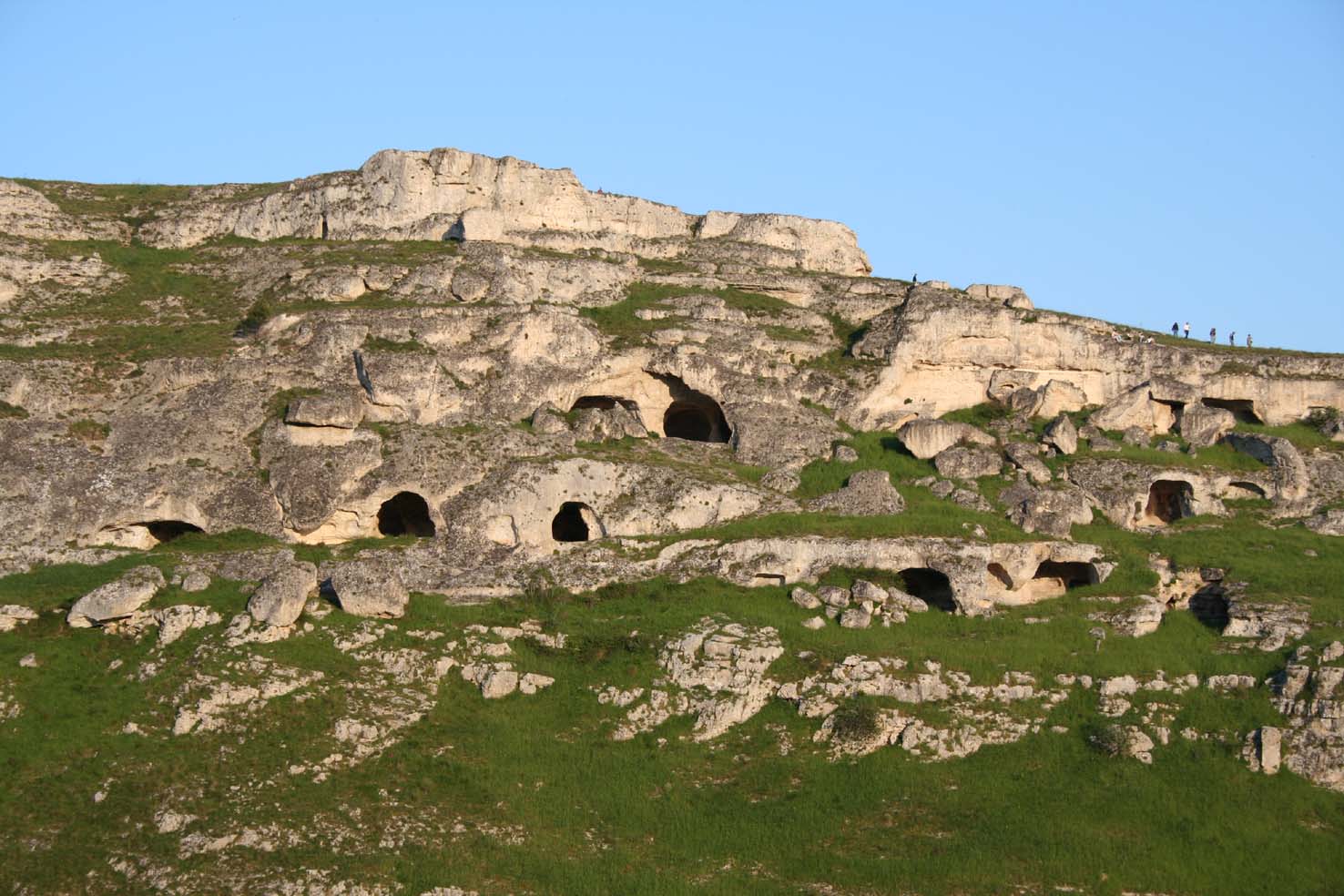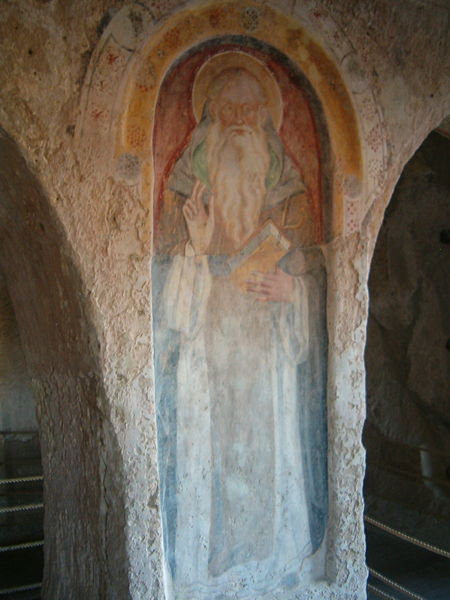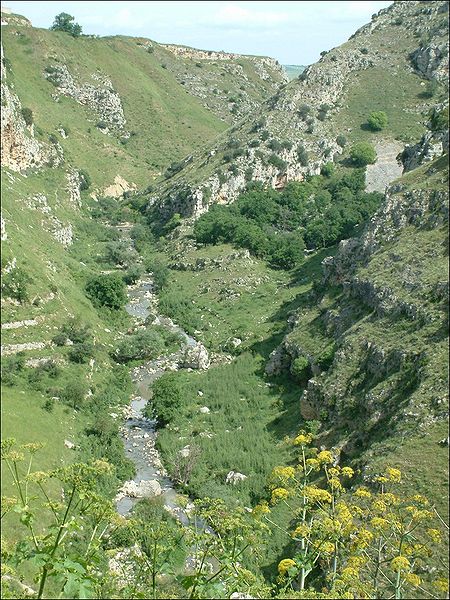
Parco della Murgia Materana
This post is also available in:
 Italiano (Italian)
Italiano (Italian)
The Basilicata Region has established in 1990 the Park of Murgia Materana in order to protect the historical, natural and agricultural patrimonies of the territory. It became operative in 1998 with the foundation of the Park Management office. The site has an extension superior to 8,000 hectares, in which the municipalities of Matera and Montescaglioso are present. It obtained the environmental certification UNI EN ISO 14001 in 2005 and it started the procedures to adhere to the EU Regulation and Certification, EMAS, and the Park Plan and technical standards for the management of the land have been approved. It was divided in many zones which undergo different types of protections. In the first area provides for the complete preservation of the naturalistic and historical aspects; it has a system of controlled access and it absolutely banned to develop other productive activities. In the second zone it is possible for already-existing farming activities going on working, while the historical and natural aspects are strongly safeguarded. The third section has the aim of recovering and reconstitute the naturalistic aspects of the rural landscape. The productive and construction activities are strictly controlled in this area. The fourth area is named “preparco” and its aim is protecting the most important zones of the Park through the control on environmental activities.
RESEARCH AND OTHER PARK’S ACTIVITIES
The Park organises research, promotion and study activities to value their naturalistic and cultural heritage. It supports tourism and farming thanks to an agreement with the Ministry of Agriculture made in 2005. It has produced a catalogue of flora, the list of insects is going to be complited soon, and the wildlife census has been started. In addition, it has published the list of the farm houses/masseria (antique agricultural settlements) present in the protected area the SITA (Sistema Informatico Territoriale Ambientale) is in fulfilment. It catalogues the rocky patrimony and the list of the churches in caves, realised with GPS, and controls the forest cover and the transformations of the territory. Furthermore, the park organises many cultural events, like “Parco Murgia Festival”, which comprehend excursions, study conventions and seminaries, theatrical and musical performances in the caves and much more; their aim is promoting the protected are and spread awareness on sustainable development in local communities. The park with other European Lands is involved in projects which aim to protect culture and environment. It has started with the University of Greece and Cyprus a project financed by the EU, which is dedicated to the knowledge of the Byzantine historic-artistic patrimony of the Mediterranean. Together with the EU it has activated the project LIFE Natura in order to restore woods in areas damaged by fires.
Murgia’s upland and the Sassi di Matera
The territory is formed principally by great calcareous outcrops, la Murgia (an arabic name), whose more superficial layer is composed of tender rocks emerged 5-2 millions of years ago, is cut deeply by channels and streams (le Gravine), formed by the erosive activity of wind and water. Local geomorphology and the lacking of rainfalls have created the Mediterranean Rush typical of dry environments. The asperity of the territory and its inaccessible locations allowed the preservation of some important botanical endemism. 923 botanical species, numerous insects’ varieties, important fauna and avifauna are present in Murgia’s Upland. This environment is essential for the survival of Falco naumanni, the smallest among the birds of prey, which registers its highest European population in this area. Humans have developed a high capacity of adaptation in such a complex environment, which produce the rocky settlements. The well-known Sassi di Matera are also particular: they are an urban settlement created by the different civilizations who inhabited the land from the stone age. The extraordinary rocky churches were created around the year one thounsand, in order to imitate the ones spread in Syria Anatolia: the most important ones are Santa Lucia alle Malve, a complex rock-hewn which hosted originally a monastic community, il Convicinio di S.Antonio, a district composed of 4 rocky crypts; Santa Maria di Idris at the top of the cliff of the same name; Santa Barbara, San Pietro Barisano with masonry faced and bell tower, while the central body is almost completely carved into the rock. It is difficult to distinguish among the influences: there are orthodox iconostasis in churches with a Latin cross plant. The frescos are less austere than the ones of the anchorites in Asia Minor, the Madonnas are less similar to queens and resemble more common women. The well-known film director Pier Paolo Pasolini set here his film “Il Vangelo secondo Matteo” in 1964. Both Murgia’s Upland and the Sassi di Matera are enlisted in UNESCO since 1993. They were the first places of Southern Italy to be included in it.
This post is also available in:
 Italiano (Italian)
Italiano (Italian)
Contatti
Via Sette Dolori, 10 - Matera(MT)
0835 336166
info@parcomurgia.it



